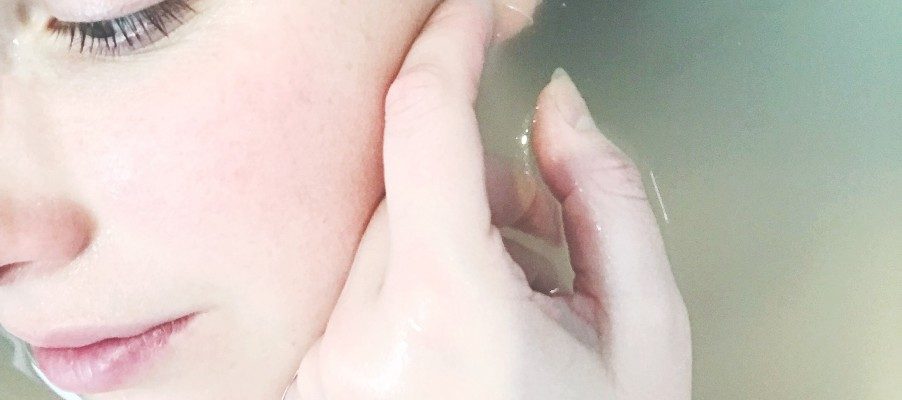How can spa operators perk up their client loyalty through retail programs? We asked five experts.
From inside the lab
Every April, Europe hosts in-cosmetics Global, the largest cosmetology conference in the world. During this event, participants can discover new ingredients and new ideas, and hear about the different projects researchers are working on worldwide. Two areas of study that are currently the focus of particular attention are anti-pollution treatments and the microbiome.
ANTI-POLLUTION TREATMENTS
Dr. Jean Krutman of the Leibniz Research Institute for Environmental Medicine in Germany, led a study which looked at 806 female Caucasians in Germany and 743 Asian subjects in the Taizhou region. The study found: • Pollutant particles can influence aging, specifically the occurrence of pigmentation spots. • An increase in soot and pollutant particles resulting from vehicular traffic has been linked with a 20 per cent increase in pigmentation spots on the forehead and cheeks. However, there was no apparent impact on the backs of hands or forearms. This study strongly suggests that there is a need for the development of skincare products containing anti-pollution ingredients that have been clinically proven to be effective. It is also an excellent reminder of the importance of cleansing the skin twice daily with products that are specifically designed to remove pollutants.
THE MICROBIOME: A new direction of study for healthy, youthful looking skin
Did you know that only 10 per cent of our body’s cells are human cells? Indeed, the human microbiota is composed of 1014 cells, that is to say, 10 times more than the total number of cells that make up the human body (about 1013).
The human microbiota is composed of all the bacteria, fungi, viruses, mites, etc. that colonize our bodies. This includes intestinal flora – also known as intestinal microbiota – as well as skin flora or skin microbiota.
This generally beneficial inborn flora can represent anywhere from 100 to 10,000,000 microorganisms per cm² of the skin, depending on the area studied, and can weigh about 200 grams. The microbiota consists of a resident population of microorganisms – known as commensal flora – as well as a transient population.
The microorganisms constituting the resident flora are firmly established. They have a harmonious, symbiotic relationship their host, helping the skin fight the proliferation of pathogens that attempt to colonize it.
Meanwhile, transient flora is composed of germs that can temporarily contaminate the skin or can settle more permanently in areas offering favourable conditions (elevated humidity, fluctuating pH levels, or breaks in the skin barrier). This can lead to a number of skin conditions, including atopic dermatitis, eczema, acne, seborrheic dermatitis, or simply skin hypersensitivity or excessive dryness.
Skin microbiota is in continuous communication with our epidermal cells, producing metabolites and stimulating cellular interactions. In recognition of its true nature as an interactive layer of the skin, on equal footing with the other layers of the epidermis, dermis, and hypodermis, the microbiota was very recently attributed a new name – the Stratum microbium.
The term “skin microbiome” refers to the entirety of these microorganisms, their genome and their interactions with their environment. The human microbiota can express 100 times more genes than the human genome itself.
A number of studies are currently being conducted to better understand the role played by the different microbiota with whom we cohabitate. Intestinal microbiota is the type we currently understand best but thanks to recent advances in microbiology and immunology, skin microbiota is gaining the attention of more and more researchers. Although its role is only partially understood today, we are becoming more aware of the many positive effects it can have on our health, both by helping develop our immune system and by acting as a barrier against pathogens. There are still many questions to be asked and the list is growing as new discoveries are made: How do these microbes interact not only among themselves but, more importantly, with the human body? How does our environment affect our skin flora? What is the relationship between skin flora and various skin conditions such as atopic dermatitis, eczema, rosacea, and acne?
In the cosmetology industry, the first applications related to these discoveries emerged around 15 years ago with the arrival on the market of prebiotics. Prebiotics help restore and maintain the balance of skin flora by promoting the development of beneficial bacteria and suppressing the development of pathogenic bacteria – a little like fertilizer that helps to clone the good bacteria while expelling harmful bacteria. We are only at the dawn of discoveries related to the microbiome. However, thanks to the rapid evolution of knowledge on the subject, we can already envision new therapeutic tools that will revolutionize our understanding of skincare, from hydration to anti-aging.




